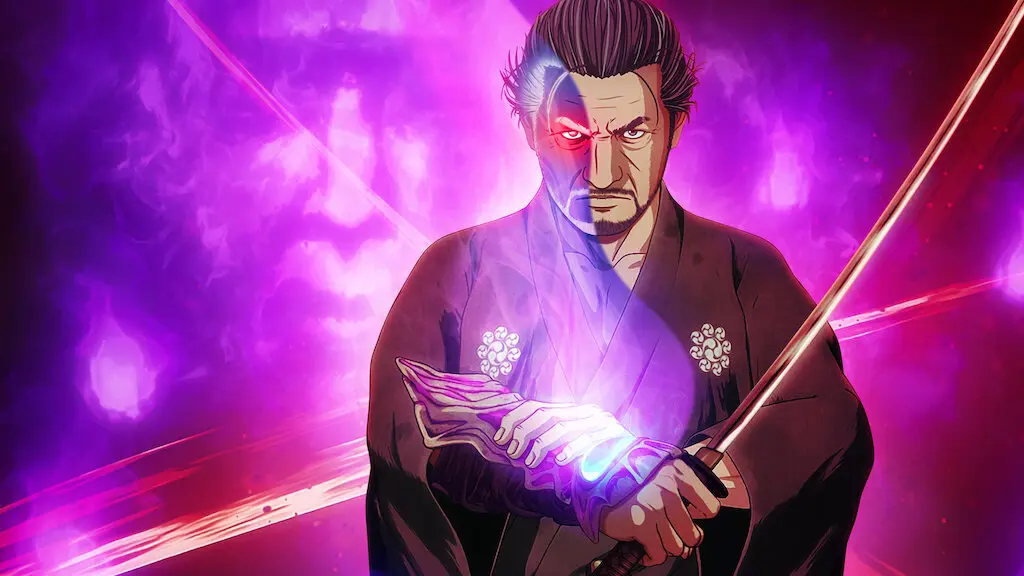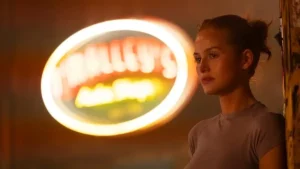Summary
Some odd aesthetic choices mean that Onimusha isn’t quite as impressive as some of its animated adaptation contemporaries, but it’s nonetheless a bloody good time.
There was a time not long ago when the idea of a decent film or TV show adapted from a video game was laughable. In 2023, this is not only no longer true but aggressively untrue, especially on streaming platforms and even more especially in animated form. Onimusha, a Netflix series from studio Sublimation and overseen by prolific action master Takashi Miike, is the latest in an increasingly long line of successes.
And Onimusha, which is adapted from the Capcom series best summed up as “Samurai Resident Evil”, is indeed a success, though one that comes with slightly more caveats than best-in-class offerings like Arcane and Cyberpunk: Edgerunners.
Onimusha Season 1 Review and Plot Summary
Set during the Warring States period of Japan – historical supervision was handled by Shochiku Studio – and following the exploits of jaded samurai Miyamoto Musashi, who has the likeness of Toshihiro Mifune, Onimusha is a demon-slashing, gore-soaked good time for the most part. In action, it’s near-peerless, but quibbles with an inconsistent animation style will be a turn-off for some.
Conceptually, the show follows the game closely enough. This isn’t a historical story, per se, but a supernatural horror, with Japan being littered with demons and other such nasties that aging Musashi is on the hunt for with the help of a mythical Oni Gauntlet. Can he wipe out the evil in the land before the evil inside himself – always the way, isn’t it? – consumes him?
This key narrative thrust is, it turns out, a little beside the point. Onimusha opens with an action sequence and can barely go five minutes at a time without providing another. It might not be the most sophisticated approach but it becomes clear quickly that it’s the right one nonetheless, since Miike’s supervision and the stunt coordination by Keiji Tsujii render the fisticuffs with a great deal of style.
Sometimes, it must be said, a little too much style. The main pushback against the series will inevitably be its often poorly-justified blend of 2D and 3D animation, with CG rendering intended to bolster the hand-drawn stuff but occasionally detracting from it. The combination of both styles often feels arbitrary. Where Captain Laserhawk: A Blood Dragon Remix, also from this year, played with visual styles and gimmicks to evoke very specific concepts or eras of gaming history, Onimusha gets fancy on a whim, and it’s easy to wish it didn’t.
This inconsistent implementation is trying at best and actively annoying at worst, though when it comes off well you can almost see a justification for it. Nonetheless, if Onimusha secures a second season, which it might, I’d prefer it not to do this at all.
It’s especially galling since the 2D stuff is beautiful, and could do all the heavy lifting on its own if it was allowed to. Franchise fans will be pleased that the anime has captured its soaring background beauty, but also the unpleasant nastiness of its monstrosities. Almost all of the show’s efforts to play on nostalgia are to be found in bloody dismemberments and screaming horrors, and, well… fair enough. Better than the puzzle-solving.
Onimusha is another successful adaptation for Netflix
If it weren’t in such esteemed company, it’d be easier to laud Onimusha. But it falls a little below stuff like Castlevania and this year’s spin-off Castlevania: Nocturne, both, like Captain Laserhawk, by Adi Shankar. It’s real good, don’t get me wrong, but it’s also not quite as good as some of its contemporaries or even, for that matter, as it could be.
Nevertheless, Onimusha is a good reminder that, yes, it is indeed possible to adapt a video game to the big or small screen. Animating it seems a reliable solution, but we mustn’t forget about The Last of Us either. The days of dreck like Uncharted might be gone, and we’ll all be better off if they are.
What did you think of Netflix’s Onimusha Season 1? Let us know in the comments.
RELATED:




